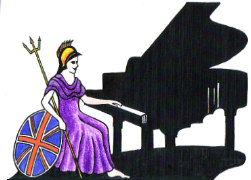Teachers, Accompanists and Piano Entertainers in the UK

UK Piano Page

Browse Locations Wales/Cymru » Carmarthenshire » Glanamman
Camden Town, London WC1
England
Westminster,Central London piano moving and
City of London, London E1
England
City of London Piano Removal and Disposal
Orchards Farm
Iden
Rye, East Sussex TN31 7XB
England
Established since 1984, we are situated at the
1 Queen Street
Horsham, West Sussex RH13 5AA
England
The Horsham Piano Centre was established in 1980
Central Arcade
Newcastle upon Tyne, Tyne and Wear NE1 5BP
England
JG Windows Ltd is one the UK's longest established
Music Festival for performers and guests Our 10th
18-06-2022 12:30PM
The Morecambe Bay Piano Group was set up to extend
11-12-2021 01:00PM
The Morecambe Bay Piano Group was set up to extend
08-01-2022 01:00PM
The Morecambe Bay Piano Group was set up to extend
12-02-2022 01:00PM